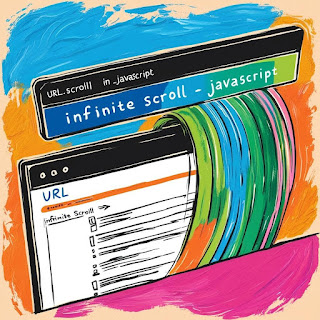How Websites Sometimes Change URLs as You Scroll
Who Uses Scroll-Driven URL Changes?
Scroll-driven URL updates are commonly used by social media platforms, news websites, e-commerce stores, and portfolio sites. Major platforms like X, Instagram, and Pinterest use this technique to improve user experience and engagement. Even large media sites such as The New York Times and The Guardian implement it to track article reading progress.
What Is Scroll-Driven URL Updating?
This is a web development technique where the URL in the address bar changes without the user clicking anything—just by scrolling. It works by detecting the scroll position and updating the browser history dynamically. It is commonly implemented using the History API (pushState & replaceState) along with JavaScript scroll events or the Intersection Observer API.
When Did This Technique Become Popular?
This feature gained traction with the rise of single-page applications (SPAs) around the early 2010s, when frameworks like React, Vue, and Angular began prioritizing seamless user experiences. Social media platforms adopted it to keep users engaged, and news and blog sites started using it for analytics tracking and better content navigation.
Where Can You See This in Action?
You can find scroll-driven URL changes in various places:
- Social Media – Twitter updates the URL when you scroll through tweets.
- News & Blogs – Some sites change the URL as you scroll through long articles.
- E-commerce – Infinite scroll product pages update URLs so users can share links.
- Portfolio & Gallery Sites – Websites with masonry layouts (like Pinterest) update URLs as images load.
Why Do Websites Use This Feature?
There are several reasons why websites implement this effect: ✅ User Experience (UX) – Helps users keep their place on the page. ✅ Shareability – Allows users to copy/paste a URL that reflects their scroll position. ✅ SEO & Analytics – Helps track how far users read and which sections are most popular. ✅ Infinite Scroll Navigation – Keeps the experience fluid without forcing page reloads.
However, this technique can also be abused for deceptive practices.
How Can This Be a Security or UX Risk?
While scroll-driven URL updates aren’t a direct security vulnerability, they can be misused in the following ways:
⚠️ Phishing Risks – A malicious site could update the URL to make users think they are on a trusted website. ⚠️ Back Button Hijacking – If the site repeatedly pushes new states, users may get stuck without being able to navigate back. ⚠️ Misinformation – Fake news sites can change URLs to make it seem like users read multiple articles when they didn’t. ⚠️ SEO Manipulation – Search engines might improperly index dynamically changing URLs.
Conclusion: Genius / Manipulation
When used responsibly, scroll-driven URL updates enhance navigation and user experience. However, when misused, they can mislead users, disrupt browsing behavior, and even be exploited for phishing.
A good website should balance innovation with transparency, ensuring users always know where they are.

Comments
Post a Comment